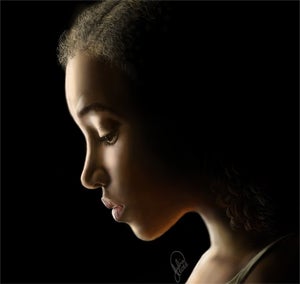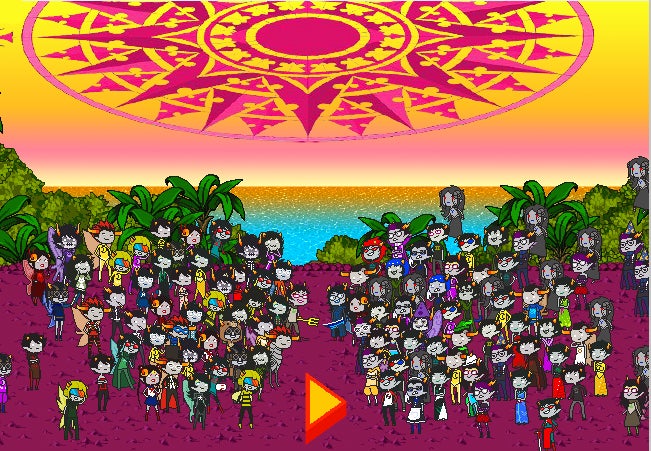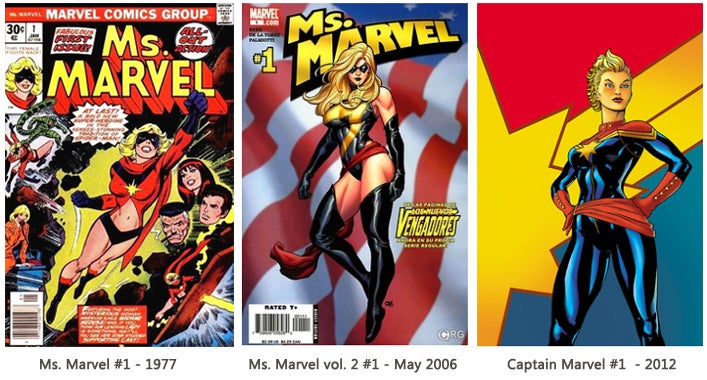It’s impossible to overstate what an important year 2012 has been to fandom. We’ve seen the previously unheard-of phenomenon of published fanfics climbing up the bestseller lists. We’ve cheered on Community spinoff Inspector Spacetime as it became a real, fan-generated project. And we retracted everything we thought we knew about the fourth wall as Sony commissioned One Direction fanfiction on Wattpad and MTV deliberately catered to slash fans in its marketing for Teen Wolf.
From Fifty Shades of Grey to bronies to Homestuck to One Direction, fandom has been a major revelation to both the mainstream media and the entertainment and publishing industries throughout the year. The fandom blog as_others_see_us, which has been quietly compiling a weekly list of mentions of fanfiction in the mainstream media since 2009, saw those lists explode in 2012; several times it had to leave out listings because each new week brought so many.
The Daily Dot has compiled a series of top 10 fandom-related lists, because just one couldn’t possibly encompass all the milestones fandom experienced over the last 12 months. We hope the series will provide a small glimpse into why this was a watershed year for fandoms off- and online.
To kick things off, we counted down the top 10 people who changed fandom irrevocably in 2012—for better and for worse.
1) Stephenie Meyer
Why is author Stephenie Meyer topping our list? Purely and solely for her monumental decision not to sue E.L. James, author of Twilight fanfic-turned-bestselling phenomenon Fifty Shades of Grey. Had she wished to, Meyer could have sent all precedents for dealing with online fanfiction spiraling backwards 20 years, to the days when authors lived in fear of having their copyright claims stolen by mercenary fans or even being sued by fans for plagiarizing fan stories.
Perhaps Meyer discussed it with her lawyers. Perhaps they came to the conclusion that trying to claim copyright against a work of fanfiction that’s clearly an Alternate Universe scenario was a losing battle. We’ll never know. But one thing is certain: Even an attempt at litigation would have significantly damaged fandom’s ongoing attempts to promote fanfiction as a transformative use of copyrighted material. Instead, her tacit acquiescence to the phenomenon that is Fifty Shades of Grey opened the floodgates on “pulled to publish” fanfiction and has indelibly changed the publishing industry and its relationship to fanfiction.
2) Anita Sarkeesian
When masters student Anita Sarkeesian wrote her thesis on “Strong Women in Science Fiction and Fantasy Television,” she had no idea that one day she would be widely touted—and demonized—as one of those strong women herself. But the creator of Feminist Frequency, a website and YouTube channel devoted to critiquing pop culture, found out from personal experience that her mantra was all too true: The way we portray fictional characters can and does have a huge impact on the world around us.
When Sarkeesian turned her incisive commentary and critical eye toward video games, misogynists and video game fans descended, pelting her with vicious online harassment, defacing her Wikipedia entry, and leaving threatening phone calls. Sarkeesian handled the whole thing calmly, reposting many of the worst insults and documenting the phenomenon as it was happening. Meanwhile, the Kickstarter for her critical series on “Tropes vs Women in Video Games” became internationally famous as fans poured funds into the project, boosting her from her original $6,000 goal to nearly $160,000.
What happened to Sarkeesian was the climax of a tumultuous year for women in the comics and gaming industries, as a long list of incidents accrued wherein women were harassed or shamed for speaking out against the culture of sexism. But after the world watched what happened to Anita Sarkeesian, it was no longer possible for the gaming industry to pretend sexism wasn’t a serious problem. Sarkeesian emboldened countless female fans and creators to speak of their own experiences, exacerbated a willingness within the industry to self-reflect and change, and remained generally badass through the latter half of 2012.
“I hope that by telling my story in the media it will spark wider awareness of this critical issue and ultimately be a small part of moving in the direction of systemic change in the community and in the industry,” she wrote on her website. In the process, she’s not only given voice to silenced female gamers, but given all fans a stellar example for how to critique and challenge the things we love to be better.
3) Larry Stylinson
Inception tried to tell us about the power of a single little idea, but we still were not prepared for Larry. Larry Stylinson is not a person, but he might as well be: In 2012, he inspired literal millions of Twitter trends, Tumblr tags, and heartbreakingly, even self-mutilation in some rare instances—all in his name. What is Larry Stylinson? It’s the belief countless numbers of One Direction fans share that band members Harry Styles and Louis Tomlinson are in love.
Larry is an idyllic myth that has grown far larger than the two real-life people behind it. The term, a hybridization of Styles’ and Tomlinson’s names, well and truly took on its own life in 2012, against all odds, or maybe even because of all the odds. Ultimately, whether Harry and Louis really are in love matters less than the powerhouse of devotion that Directioners have built around Larry. It’s paved the way for a totally new kind of celebrity worship—and a totally new way of doing fandom.

4) Amandla Stenberg
2012 saw lots of positive interactions between fandoms and the actors involved with them, from Clark Gregg’s tweets to The Avengers fans to Misha Collins’ ongoing enthusiasm for Supernatural fandom. But sometimes a fandom is less kind to one of its actors, and sometimes the hardest thing for fans to realize is when their actions are overtly harmful. Of all the interactions we saw between actors and fans this year, only one simultaneously broke our heart and made us hopeful.

When 13-year-old Amandla Stenberg was cast as Rue, a pivotal and beloved character from The Hunger Games, most fans were enthusiastic and vocal in their support. But a surprising number of fans were outraged by the casting decision; even though Rue is described in Suzanne Collins’ novel as having “dark brown skin and eyes,” some fans hadn’t gotten the memo, and they couldn’t understand why an African-American was playing one of their favorite characters.
The blatant racism sparked widespread media attention and spawned a Tumblr dedicated to calling out racist Hunger Games tweets. It then branched out into calling out racist backlash against diverse casting, while Hunger Games fans spoke out in support of Stenberg and other members of the franchise’s racially diverse cast. As for Stenberg, she issued a short press release amid the controversy that simply thanked all the fans that had sent her support. Perhaps more prominently even than the “racebending” controversy over The Last Airbender casting, Stenberg called attention to the need for more diversity in Hollywood. Later on this year, when a similar controversy broke out over the casting of Godrey Gao as Magnus Bane in The Mortal Instruments film series, it was quickly drowned out by the overwhelming support of fans decrying the racist response and declaring their enthusiasm for the Southeast Asian actor.
Just like her character, in 2012, Stenberg became a symbol of a larger social problem within fandom—and, ultimately, a symbol of unity and hope.
5) Hank Green
At every turn this year when you looked to homegrown fan movements and fandoms for online media, you saw Hank Green. He was on tour with Harry and the Potters, on the fringe of wizard-wrock culture that breathed new life into HP fandom. He was there behind the scenes of the popular Lizzie Bennet Diaries as its creator and co-producer; the webseries retelling of Pride and Prejudice racked up a quarter of a million views in a week for a single episode.
And, of course, the massive Nerdfighter fanbase continued to grow for him and his brother, acclaimed Young Adult novelist John Green—together known as the Vlogbrothers. In the 2012 Olympics, British gymnast Jennifer Pinches flashed the Nerdfighter sign; in November, President Barack Obama’s Tumblr posted a simple “DFTBA,” illustrating that the Nerdfighter mantra, “Don’t Forget to Be Awesome,” had become much more than just a catchphrase. Whether it’s teaming up with the Harry Potter Alliance to get out the vote, creating the industry-changing and undeniably awesome VidCon, or promoting the vlogging charity project Project For Awesome, Hank Green continues to align three principles: industry innovation, fan participation, and progress. He’s left an indelible mark on fandom, and helped fandom, in turn, to leave an indelible mark on the world.
6) Jeff Davis
When the creator of Teen Wolf set out to make a fun, hip reboot of the ‘80s Michael Fox comedy, he probably didn’t envision that he’d also be entering into uncharted marketing waters for not only MTV but all of Hollywood. But when millions of Teen Wolf fans sunk their fangs into the juggernaut pairing of Sterek—the potential romantic relationship of male characters Stiles and Derek—Davis, himself a queer writer and producer, decided to roll with it. For the Teen Choice Awards, MTV put actors Dylan O’Brien and Tyler Hoechlin on a boat to pay homage to all of the people “shipping” their characters together—sending all of fandom into a sustained elation that has yet to die down months later and setting an entirely new precedent for how producers, creators, and the industry at large, can embrace fandom.

Davis went one step further, stating that if the fans made enough noise, Sterek could happen on the show. MTV went on to promote a fanfic contest that received over 10,000 entries—most of them Sterek-related. At New York ComicCon in October, reports were that the Sterek fanbase overshadowed nearly everything else. Just last week, Hypable asked, “Is Sterek a ship that’s sailing too hard?” Has Davis created a monster through his indulgence? It’s too soon to tell, but at the close of 2012, it’s clear that he may have created something even more lasting: a marketing ploy turned potential storyline—a phenomenon that could impact the way fans interact with creators for years to come.
7) Andrew Hussie
If embracing fan culture is a skill you can acquire with practice, then in 2012, Andrew Hussie leveled all the way up to the top. Or, as Homestuck fans might say, he reached the god tier.
For fans of the epic online webcomic and phenomenon, Homestuck’s creator has always been fandom’s person of the year. But two things happened this year that raised Homestuck to the level of a major internet phenomenon. First, MS Paint Adventures, where Homestuck is housed, hit 1 million unique visitors a day, with pageviews sometimes higher than 5 million; Second, the Homestuck fanbase boosted Hussie’s Kickstarter for a Homestuck adventure game to $2.5 million dollars, making it the eighth-most successful campaign on the site to date and by far the most successful campaign to be fueled by a fandom.
Hussie has known all along that the key to fan investment was fan interaction. From the beginning, MS Paint Adventures was designed as a series of interactive storylines, with fans contributing ideas for what came next. When Homestuck segued into being written solely by Hussie, he still continued to integrate interactivity into the comic, which is itself about a fictional interactive adventure game that can divide reality into separate timelines with more layers than a card deck and more characters than a typewriter. Think Jumanji meets Back to the Future meets 4chan meets… nevermind. There’s nothing like Homestuck except Homestuck.
Hussie’s ability to cultivate a massive fanbase for one of the most complex, impenetrable, and epic stories ever written is something that may prove to be a single case rather than a template for future homegrown fanbases. But his widespread incorporation of the music, art, and ideas of fan artists, musicians, and writers into his website and the comic itself is a definite lesson for other creators to follow.

8) Amanda Palmer
Apart from the controversy, Palmer’s invitation to hold a musical jamboree with fans at every stop on her Grand Theft Orchestra was flat-out awesome. Perhaps inspired by countless moments when jazz legends and other musicians have joined one another onstage for spontaneous (unpaid) jam sessions, Palmer invited fans to “COME JOIN THE FUCKING ORCHESTRA,” as part of every stop on her tour.
It was just one of several moments this year when Palmer wholeheartedly embraced fan culture and the fans embraced her—like when her Kickstarter to crowdfund her new album became the most successful musical drive on the site’s history, raising $1 million over its original goal of $100,000 from thousands of grateful fans.
The Kickstarter came back to haunt her when she made the offer to fans to play for free. Though she originally offered in good faith to “feed you beer, hug/high-five you up and down (pick your poison), give you merch, and thank you mightily for adding to the big noise we are planning to make,” she touched a nerve with musician unions outraged that after having raised so much money from fans, she wanted them to play for free at what could have been an all-too-rare paying gig for pro musicians. Inadvertently, Palmer jumpstarted a widespread, important conversation about fan culture and the “the eco-system of playing for reasons other than cash money.”
Although Palmer eventually decided to pay her musicians, she added that she was “sad to realize that our creative intentions of crowd-sourcing… are getting lost in the noise of this controversy.” But at the end of the year, what remains is that Palmer upheld the idea that the fannish culture of free exchange is a valid one, and she encouraged more musicians to find new ways of letting fan participation boost their overall success.
9) Azealia Banks
It’s been a monumental year for Azealia Banks, especially after the build-up and hype around her much-loved Fantasea—a summer mixtape that she debuted online as a free download. “Fantasea is almost kind of a first album of sorts….but it happened by mistake…. It’s weird,” she tweeted. “This is a test run… I tried a lot of cool things… Sounds I thought were progressive, beats made by close friends, different flowsss.” The acclaim she got from her choice to launch online first was widespread, but critical acclaim for the album was even higher.
With her feet planted firmly between DIY online music culture and mainstream hip-hop, Banks has run into controversy several times this year, first by clashing with Lil Kim and Jim Jones, then fighting with esteemed DJ Munchi over her use of his remix. And while she’s been rocking the mermaid vibe for a while, she still couldn’t avoid scandal when she went full-throttle seapunk on last month’s “Atlantis” release.
Despite the drama, Banks’s fanbase has grown from the start, and she’s remained constantly in touch with them. Licquorice Bitch wrote on an Azealia fanboard: “she re-blogged my home-made Fantasea CD, replied to my tweets a few times, followed me and answered one of my ustream questions. I seriously listened to her 24/7 around late July/early August. It was an amazing two-and-a-half months.” It’s a sign that Banks is as committed to grassroots fan culture now as she was three years ago, when she first began uploading songs to Myspace.
“What the old heads don’t understand is that my generation grew up on AOL, so we had access to all of this shit,” Banks told Vibe in August. “How the fuck you think I know about all these indie bands and every single music scene in the world? It’s called the Internet.”
10) Kelly Sue DeConnick
If you’re not a Marvel fan, you may be thinking: Who? But for a while now this female comic book writer has been quietly pressing for more and more agency from female characters within Marvel comics, and this year, things came to fruition in a big way. While much attention in 2012 went to the ridiculous poses and costumes in which comic artists draw female characters, DeConnick managed to take the reigns of a female superhero; ensure that her uniform involved sensible pants and full protective body armor, without a single skin-revealing design; and secure her a superhero promotion.
Carol Danvers, known to Marvel fans as Ms. Marvel, was briefly promoted to Captain Marvel in an eight-issue 2005 series called House of M, written by Brian Bendis. However, that was just an Alternate Universe setting, so once that issue was done, she continued on in the popular reboot of ‘70s series Ms. Marvel. All that changed this year when DeConnick started a new series for Marvel.

This is not the first time Captain Marvel has been played by a woman, but it is the first time since last year that a female Marvel superhero has headlined her own series; the previous attempt was cancelled. Before launch, fans spread a preorder campaign to send Marvel a message that they wanted this series to live.
“By no means is this book a no-brainer,” DeConnick told the Los Angles Times in August. “I have said from the beginning if we get 12 issues, I will consider this a huge win.”
Seven issues later, DeConnick seems on track to get her win and then some: In addition to Captain Marvel, she is now writing issues of Avengers Assemble, a movie-compatible spinoff that promises to take the franchise in interesting new directions.
On Tumblr, DeConnick interacts with and embraces Carol’s fanbase, reblogging fanart and praising what she’s dubbed the “Carol corps.” “There’s nothing inherently masculine about power fantasies,” she told the Times.
“There’s nothing inherently masculine about superhero comics. There’s nothing inherently masculine about mythology. About science fiction. There is no reason that a woman who is interested in this field as a reader or creator should feel that she is peculiar in any way.”
In a year where geek culture has fixated on the “fake geek girl,” DeConnick has consistently shown the comics industry that female fans—and female heroes who aren’t objectified—can fit right in.
Correction: The original version of this story made reference to a lawsuit involving sci-fi author Marion Zimmer Bradley. Since the details of the case are not clear, it has been removed for clarity. The original version also misidentified Godfrey Gao. We regret the error.
Illustration of The Hunger Games’ Rue by lilinuuh/Deviantart


